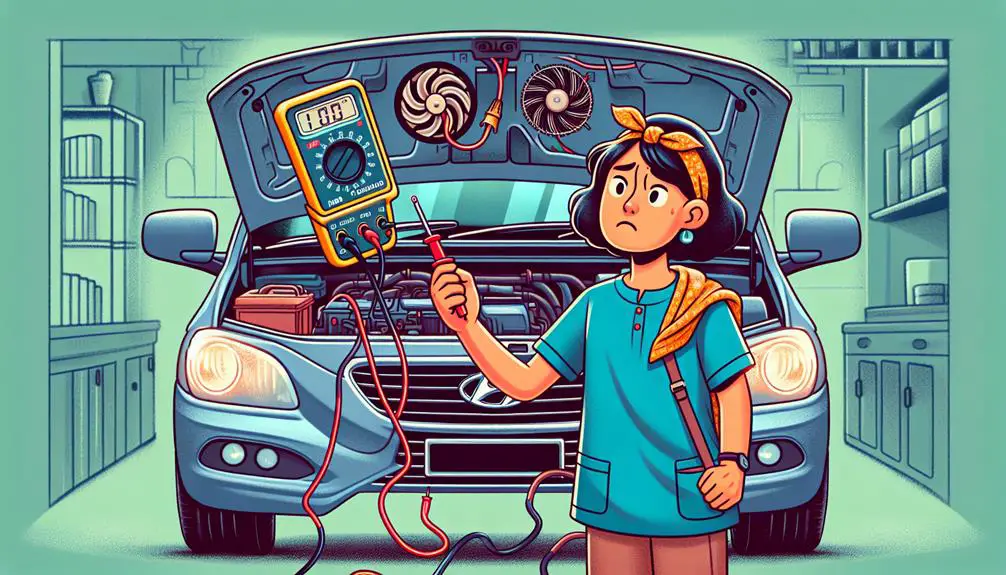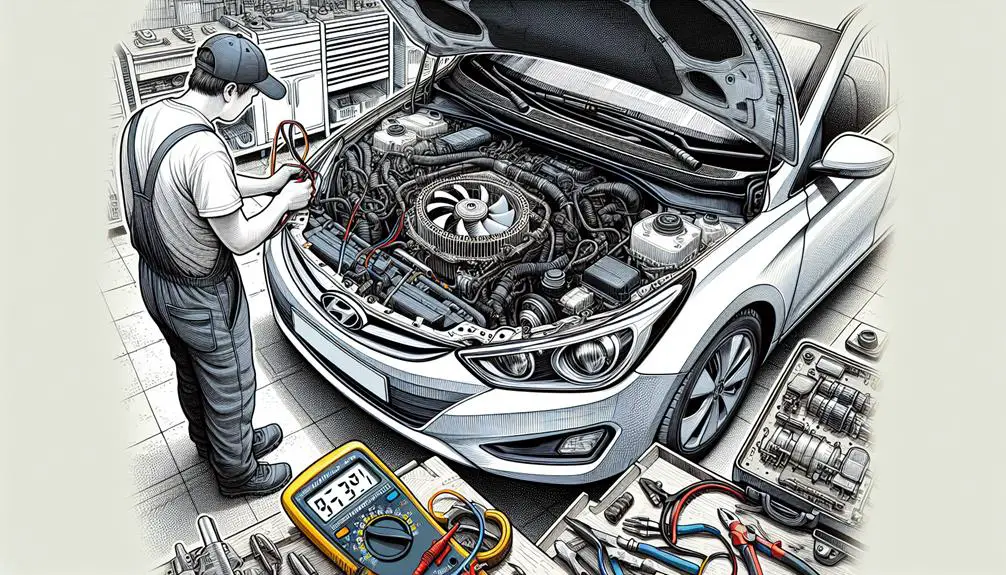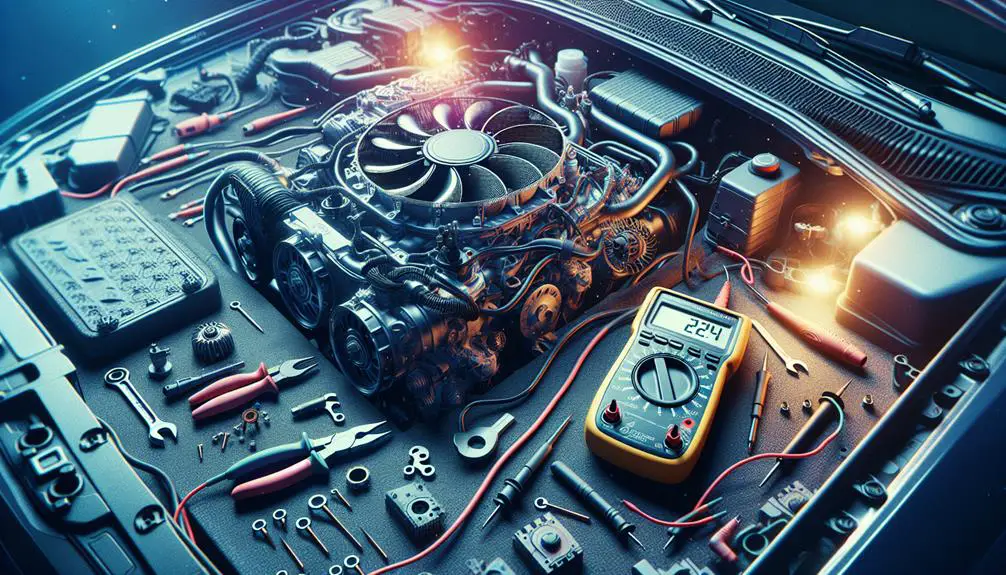- Check the fuse box to ensure the fuse related to the fan is not blown.
- Inspect the fan motor to see if there are any visible signs of damage or malfunction.
- Test the thermostat to make sure it is sending the correct signals to the fan.
Ensure each of these components is functioning properly to diagnose and fix the issue with the Hyundai fan not working.
Identifying the Problem

Identifying the issue with your Hyundai's fan begins with recognizing common symptoms that suggest it's not working properly. The most obvious sign you'll notice is the lack of airflow from the vents, whether it's the heater or the air conditioner you're trying to use. This can range from weak airflow, even at the highest setting, to absolutely no air coming out at all.
Another symptom to be aware of is noise coming from the fan when it's running. If you hear rattling, buzzing, or any unusual sounds, it's a clear indicator something's off. These noises can point to a blockage or even damage within the fan assembly itself.
Moreover, if you're experiencing intermittent fan operation—where the fan works sporadically, without any clear pattern or reason—it's another telltale sign. This erratic behavior can be frustrating and is a definite clue that you need to investigate further.
Checking the Fuse Box
Before diving deeper into your Hyundai's fan issue, you'll want to check the fuse box to make sure the fan's fuse hasn't blown. The fuse box is your initial stop in troubleshooting electrical problems, including a non-operational fan. It's a simple check that can save you time and possibly money on unnecessary repairs.
Here's how you can easily check the fuse box:
- Locate the Fuse Box: Your Hyundai's manual will tell you where the fuse box is located. Most are found under the dashboard on the driver's side or in the engine compartment.
- Identify the Fan Fuse: Use the diagram on the fuse box cover or your owner's manual to find the specific fuse for the fan. It's usually clearly labeled.
- Inspect the Fuse: Carefully remove the fuse and inspect it. If the metal strip inside is broken, the fuse has blown.
If you find that the fuse is indeed blown, replacing it might just solve your fan problem. However, if the new fuse blows soon after replacement, you might be facing a more complex electrical issue that requires professional attention. Remember to only replace the fuse with one of the same rating to avoid any electrical mishaps.
Inspecting the Fan Motor

After checking the fuse and finding it intact or replacing a blown one, your next step is to inspect the fan motor for any signs of malfunction.
To do this, you'll initially need to locate the fan motor. It's usually situated near the radiator or on the firewall in the engine compartment. Once you've found it, visually inspect it for any obvious signs of damage such as cracks, corrosion, or loose connections. If everything looks good on the outside, it's time to dig a bit deeper.
You'll want to make sure the fan motor's power supply is working correctly. Disconnect the fan motor connector and use a multimeter to check for power and ground at the connector when the engine is running and the air conditioning is on. No power could indicate a wiring issue or a problem with the fan control module.
If the power checks out, the issue might still be with the fan motor itself. It's possible for the motor to fail internally without showing any external signs of damage. In this case, the fan won't operate regardless of the power supply, and you'll likely need to replace the motor.
Testing the Thermostat
To guarantee your Hyundai's cooling system operates efficiently, it's important to test the thermostat, a key temperature-regulating component. This device controls the flow of coolant to the engine, ensuring it operates at an ideal temperature. If it's malfunctioning, your car's engine might overheat, or the heating system might underperform.
Testing the thermostat isn't as intimidating as it might seem. Here's how you can do it:
- Remove the thermostat: Initially, you'll need to locate the thermostat housing on your engine. It's typically found where the top radiator hose connects to the engine. You'll have to drain some coolant and remove the housing to access the thermostat.
- Inspect the thermostat: Look for any visible signs of damage or corrosion. If it looks intact, you'll still need to test its functionality.
- Test in hot water: Place the thermostat in a pot of water and gradually heat it. Observe if it opens as the water warms. A working thermostat will start to open between 160°F and 195°F. If it doesn't open, it's time to replace it.
Troubleshooting Electrical Issues

Identifying and fixing electrical issues in your Hyundai can greatly improve its performance and reliability. When your fan's not working, the problem often lies within the electrical system. You'll want to start by checking the fuse associated with the fan. If it's blown, replacing it might just solve your issue. However, if the fuse looks good, the problem could be deeper, like a faulty fan motor or a problematic wiring connection.
Next, inspect the fan motor itself. You can do this by directly connecting the fan to the battery. If the fan spins, the motor isn't the issue. Instead, you might be looking at a wiring problem or a defective fan relay. To test the relay, swap it with another identical relay in your Hyundai's fuse box. If the fan starts working after the swap, you've identified the culprit and it's time to replace that relay.
Lastly, don't overlook the fan control module, especially in models where the fan speed is variable. A malfunctioning module can prevent the fan from operating correctly. If you're not comfortable tackling these electrical issues yourself, it's wise to consult a professional. Remember, addressing electrical problems promptly can prevent more serious damage down the line.
Conclusion
In sum, tackling a Hyundai fan not working begins with identifying the issue, checking the fuse box, inspecting the fan motor, and testing the thermostat. If these steps don't solve the problem, you'll need to delve into troubleshooting electrical issues.
Remember, it's often a process of elimination. Don't hesitate to seek professional help if you're stuck. With patience and a systematic approach, you'll have your Hyundai's fan up and running in no time.